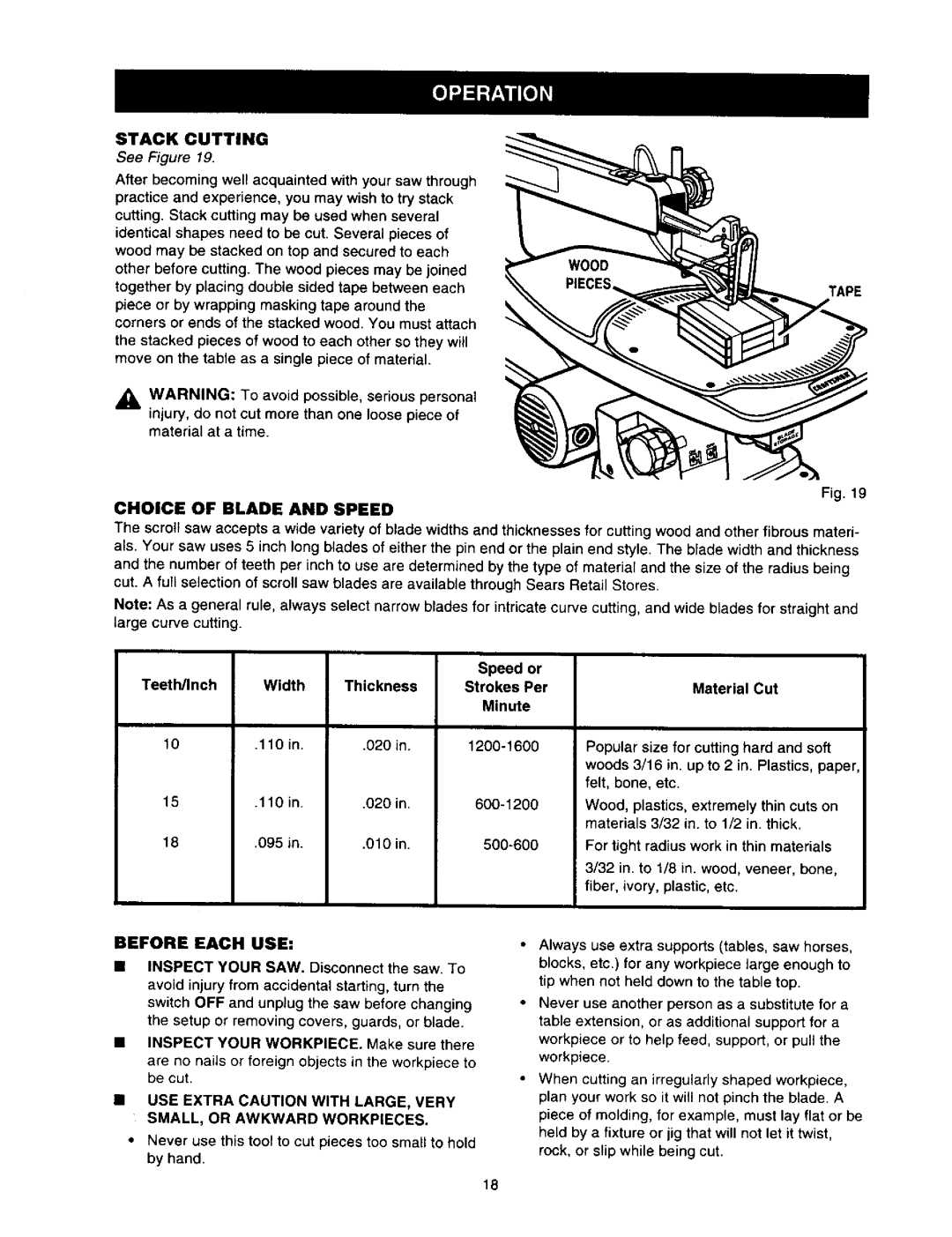
STACK CUTTING
See Figure 19.
After becoming well acquainted with your saw through practice and experience, you may wish to try stack cutting. Stack cutting may be used when several identical shapes need to be cut. Several pieces of wood may be stacked on top and secured to each other before cutting. The wood pieces may be joined
together by placing double sided tape between eachTAPE piece or by wrapping masking tape around the
corners or ends of the stacked wood. You must attach the stacked pieces of wood to each other so they will move on the table as a single piece of material.
_I, .WARNING:. To avoid possible, serious personal injury, do not cut more than one loose piece of material at a time.
Fig. 19
CHOICE OF BLADE AND SPEED
The scroll saw accepts a wide variety of blade widths and thicknesses for cutting wood and other fibrous materi- als. Your saw uses 5 inch long blades of either the pin end or the plain end style. The blade width and thickness
and the number of teeth per inch to use are determined by the type of material and the size of the radius being cut. A full selection of scroll saw blades are available through Sears Retail Stores.
Note: As a general rule, always select narrow blades for intricate curve cutting, and wide blades for straight and large curve cutting.
Speed or
Teeth/Inch Width ThicknessStrokes Per Minute
10 | .110in. | .020 in. |
Material Cut
Popular size for cutting hard and soft
woods 3/16 in. up to 2 in. Plastics, paper, felt, bone, etc.
15 | .110in. | .020 | in. | |
18 | .095in. | .010 | in. |
Wood, plastics, extremely thin cuts on materials 3/32 in. to 1/2 in. thick.
For tight radius work in thin materials
3/32 in. to 1/8 in. wood, veneer, bone, fiber, ivory, plastic, etc.
BEFORE EACH USE:
•INSPECT YOUR SAW. Disconnect the saw. To avoid injury from accidental starting, turn the switch OFF and unplug the saw before changing the setup or removing covers, guards, or blade.
•INSPECT YOUR WORKPIECE. Make sure there
are no nails or foreign objects in the workpiece to be cut.
•USE EXTRA CAUTION WITH LARGE, VERY SMALL, OR AWKWARD WORKPIECES.
•Never use this tool to cut pieces too small to hold by hand.
•Always use extra supports (tables, saw horses, blocks, etc.) for any workpiece large enough to tip when not held down to the table top.
•Never use another person as a substitute for a table extension, or as additional support for a workpiece or to help feed, support, or pull the workpiece.
•When cutting an irregularly shaped workpiece, plan your work so it will not pinch the blade. A piece of molding, for example, must lay flat or be held by a fixture or jig that will not let it twist, rock, or slip while being cut.
18
